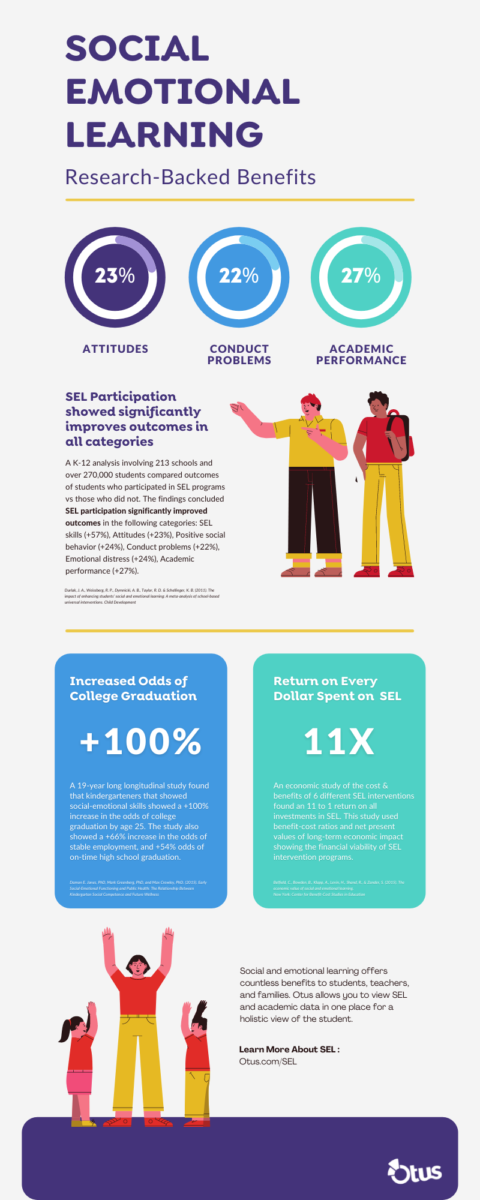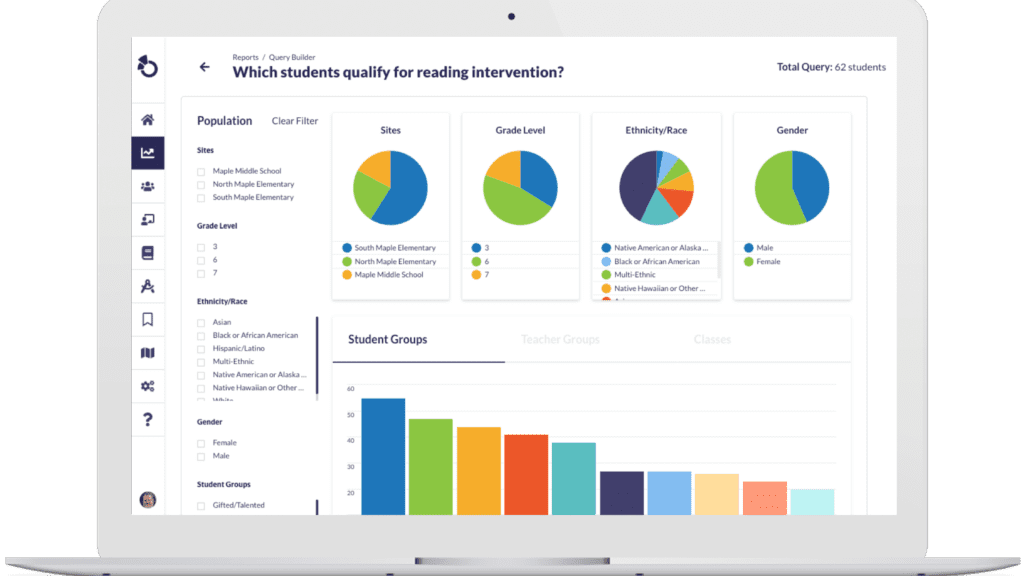Social Emotional Learning: The Definitive Guide (2024)
By: David Specht
What is Social and Emotional Learning?
Social and Emotional Learning is defined as “The process through which all young people and adults acquire and apply the knowledge, skills, and attitudes to develop healthy identities, manage emotions and achieve personal and collective goals, feel and show empathy for others, establish and maintain supportive relationships, and make responsible and caring decisions.” (CASEL)
4 Examples of Social-Emotional (SEL) Activities in the Classroom
1. Consistent SEL Check-Ins
Check-ins are a great way to connect with students on a personal level. Check-ins give teachers insight into who their students are before they focus on what they are teaching. Student check-ins can be done either in person or virtually. An in-person check-in can be individually greeting each student or asking a question at the start of class.
There are plenty of tools that allow for asynchronous check-ins for a virtual classroom. With Otus, quickly create a simple assessment to ask how students are feeling, or integrate countless SEL tools. You can see social-emotional, academic, and behavioral data together for a holistic view of each student.
2. Give Time and Space for Reflection
We live in an increasingly busy world, especially for students. It can be easy to rush from one lesson to another, trying desperately to get through the material. Students are often so concerned with memorizing material, they forget to check in with themselves.
An easy way to bring social-emotional learning into the classroom is by carving out 5 to 10 minutes of “reflection time.” This can consist of freewriting, drawing, or even deep breathing exercises. Creating quiet, reflective time for students can help them connect and acknowledge their own emotions. This time also allows them to communicate how they are feeling through writing or drawing.
3. Encourage Collaboration
An important piece of social and emotional learning is understanding how to relate and interact with others. You can help nurture these skills with group work. Alternate between assigning groups and letting students choose their own partners.
Reminding students what it means to be a good partner can also be helpful. These skills include active listening, giving compliments, and asking questions. These skills take time to learn, so it is important to give plenty of practice opportunities.
4. Learn and Practice Emotions Vocabulary
A crucial building block of social and emotional learning is identifying emotion. A great way to give language to these emotions is to utilize an emotion list or diagram. Giving names to the emotions students feel throughout the day normalizes those feelings. With more awareness, students will also be prepared to handle those emotions better.
Start by asking students to write down which emotions they are feeling that day. If you’re reading books in class, integrate emotion identification into your studies. Imagining how a character from a story feels is the perfect practice for real-life situations.
The 5 Core Social-Emotional Skills
When it comes to teaching social and emotional skills, many curriculums will use the five core skills published by Collaborative for Academic, Social, and Emotional Learning (CASEL). These five areas of competence start with understanding and managing your own emotions, then move to broader social skills and decision-making.
Self-Awareness
Self-awareness is a common skill to focus on first when teaching SEL because it is a foundational building block for other skills. Self-awareness revolves around understanding one’s own feelings, emotions, thoughts, and values. This skill involves identifying feelings and understanding the difference between emotions. Emotion charts (described above) help students connect their feelings to an emotional vocabulary.
Another aspect of the self-awareness skill is transitioning from a fixed mindset to a growth mindset. The idea behind the growth mindset is that skills and abilities can be developed. An easy way to introduce this concept is by adding “yet” to the end of negative statements. “I’m not good at multiplying fractions…yet!” This change in mindset gives students agency as they move on to a skill like self-management.
Self-Management
Self-management is the practical application of self-awareness. In self-management, the focus shifts from understanding one’s emotions to managing them. Teaching this skill can involve teaching stress management strategies to help cope with emotions. One of many techniques that can help students is pausing to taking deep breaths before responding to a situation.
Another important part of self-management is goal setting. Setting and achieving goals allows students to practice critical life skills like taking initiative, planning, and self-discipline. When helping students create their own goals, try using the SMART method. With the SMART method, goals need to be Specific, Measurable, Achievable, Relevant, and Time-bound. This structure can help students avoid the pitfall of generic or non-attainable goals.
You can also utilize goal setting as a continuation of a growth mindset. When a student is struggling, help them view the situation with a growth mindset, then encourage them to create a plan for their own success.
Social Awareness
Many skills learned in self-awareness extend to social awareness. Instead of identifying self-emotions, students are now identifying emotions in others. Social awareness requires thinking outside your own experience and imagining life in someone else’s shoes. Understanding the perspective of people in different situations, settings, and cultures is key to mastering social awareness.
To practice this skill, ask students to think about what emotions a character in a story might be feeling. This allows them to see how others are feeling and helps foster empathy. This exercise can be especially powerful when used across several types of stories, time periods, and settings.
Relationship Skills
Much like how self-management is a practical application of self-awareness, relationship skills are the natural application of social awareness. Relationship skills involve learning to communicate effectively, resolve conflict, work in teams, and learning how to ask for help. These complex skills build on the foundation of understanding oneself and others.
Group work is the best way to practice relationship skills. While working with a partner or in a group, students must learn how to communicate and work together. Another way to encourage effective teamwork is to talk about how a good team member acts and celebrate teams when they overcome challenges.
Responsible Decision-Making
This skill is different from the four previously mentioned skills in that it focuses on the long term. Self-management and relationship skills teach students how to act in a given situation, responsible decision-making is all about the long-term implications of those actions or choices. The key elements of this competency are open-mindedness, logical thinking, and anticipating long-term impacts and consequences.
One framework to help students practice responsible decision-making is the POOCH method. This method has 4 steps:
- Defining the
PROBLEM - Brainstorming
OPTIONS - Predict
OUTCOMES for each option - Finally,
CHOOSE which option to go with
Benefits of Social Emotional Learning

Increased Positive Outcomes
A K-12 analysis involving 213 schools and over 270,000 students compared outcomes of students who participated in SEL programs vs those who did not. The findings concluded SEL participation significantly improved outcomes in the following categories:
- SEL skills (+57%)Attitudes (+23%)
- Positive social behavior (+24%)
- Conduct problems (+22%)
- Emotional distress (+24%)
- Academic performance (+27%)
Higher Odds of Long-Term Success
A 19-year longitudinal study found that kindergarteners that displayed social-emotional skills showed a +100% increase in the odds of college graduation by age 25. The study also showed a +66% increase in the odds of stable employment and +54% odds of on-time high school graduation.
Financial Return on Investment
An economic study of the cost and benefits of six different SEL interventions found an 11 to 1 return on all investments in SEL. This study used benefit-cost ratios and net present values of long-term economic impact showing the financial viability of SEL intervention programs.
Sources:
1. Durlak, J. A., Weissberg, R. P., Dymnicki, A. B., Taylor, R. D. & Schellinger, K. B. (2011). The impact of enhancing students’ social and emotional learning: A meta-analysis of school-based universal interventions. Child Development (link)
2. Damon E. Jones, PhD, Mark Greenberg, PhD, and Max Crowley, PhD. (2015). Early Social-Emotional Functioning and Public Health: The Relationship Between Kindergarten Social Competence and Future Wellness (link)
3. Belfield, C., Bowden, B., Klapp, A., Levin, H., Shand, R., & Zander, S. (2015). The economic value of social and emotional learning. (link)
3 Online SEL Activities for Distanced Learning
1. Provide Students a Mindfulness Routine
Without a physical change in location, students can struggle to make the mental and emotional switch from “home” to “school.” This can result in distracted behavior, frustration, or a lack of engagement.
One way to help students make the transition is through a routine. This can be the first five minutes of class or a resource they can use as needed. Routines are incredibly helpful for resetting and changing mindsets. A social and emotional learning routine might focus on some of the self-awareness and self-management SEL skills.
Here is an example of a 5-step mindfulness routine:
- Take three deep breaths
- Name an emotion you are feeling right now
- List two things you are grateful for
- Pick a positive self-talk phrase
- Create one goal for today
2. Use Breakout Rooms for Group Activities
One of the hardest hurdles to overcome in a virtual classroom is creating opportunities for students to connect. In the physical classroom, this often happens naturally. However, during distance learning, creating and strengthening student connections can pose a significant challenge.
One way to promote relationship skills in a virtual classroom is by utilizing “breakout rooms.” Sending pairs or groups of students to a private room to discuss a topic allows them to practice cooperative problem-solving.
3. Host a Virtual Talent Show
Another way to promote social awareness and social skills is through hosting a virtual talent show. This creates an opportunity for students to express themselves and practice celebrating the talents of others. After a student performs, give the other students opportunities to compliment them on their performance.
How Otus Makes SEL Easy
Integrations
There are a ton of awesome social and emotional learning tools out there. Otus easily integrates with countless tools and systems so you can view all SEL data right next to test scores. Having the additional context of SEL data within a student’s profile allows teachers to see the whole student and better serve their needs.
Otus Plans – Progress Monitoring
Otus is an all-in-one solution to teach, grade, analyze, and plan. One of the best parts of having all this information in one place is how it can work together. Otus’ progress monitoring tool, Plans, empowers teachers to make completely customized plans for all of their students. Whether a student needs an academic plan, athletic eligibility plan, or a social-emotional plan, Otus can help you track a student’s progress toward success.
Want to see a hands-on demo?
Interested in seeing Plans in action? Take a quick tour of Plans with Otus COO, Dr. Keith Westman. This demo will show you how flexible and easy-to-use Plans is, especially for tracking social-emotional learning.
Related Resources
Request a demo!
See exactly how Otus can help your school accelerate student growth and improve student outcomes – all while saving educators time.




